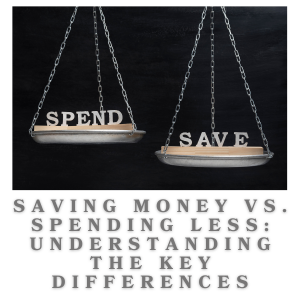If your expenses exceed your income, making a simple budget is crucial to gaining control. Here’s how:
Step 1: List Your Income

Write down all sources of income, including your paycheck, side hustles, and any government benefits. Be realistic about how much money you have coming in each month.
Step 2: List Your Expenses
Create two categories: fixed expenses (e.g., rent, utilities, minimum debt payments) and variable expenses (e.g., groceries, transportation, discretionary spending). Add them up to see the total. Be thorough and include irregular expenses, such as annual subscriptions or maintenance costs.
Step 3: Identify Non-Essential Spending
Carefully review your variable expenses and highlight areas where you can cut back. Non-essential items, such as entertainment subscriptions, dining out, or daily coffee runs, are common culprits. If necessary, eliminate these expenses temporarily to free up funds for essentials.
Step 4: Prioritize Your Bills
Organize your expenses by priority:
- Housing and utilities: Rent or mortgage, electricity, water, and gas.
- Groceries: Plan meals and shop with a list to avoid unnecessary purchases.
- Transportation: Gas, public transit, or car maintenance to ensure you can get to work.
- Minimum debt payments: To avoid late fees or damage to your credit score.
- Everything else: Include discretionary expenses and non-urgent bills in this category.
Step 5: Allocate Your Income Strategically
Assign your income to cover expenses in the order of priority. For example, if you’re short on cash, pay your rent, utilities, and groceries first. Next, allocate funds for transportation and debt minimums. If there’s still a shortfall, contact creditors or service providers to set up payment arrangements.
Step 6: Implement Low-Cost Living Strategies
Find creative ways to stretch your budget further. For instance, cook meals at home using inexpensive ingredients like pasta, beans, and frozen vegetables. Take advantage of free activities in your community for entertainment, and try swapping services or goods with friends to save money.
Step 7: Monitor and Adjust Your Spending Daily
Keep a close eye on your spending to ensure you’re sticking to your budget. Use a budgeting app or a simple spreadsheet to track every dollar. If unexpected expenses arise, adjust your plan to accommodate them without sacrificing critical payments.
Step 8: Build an Emergency Plan
Even if you’re working with limited funds, it’s important to start building a small emergency fund. Set aside a few dollars each week to handle unforeseen expenses, like a car repair or medical bill, which can otherwise derail your budget.
Final Thoughts
Living paycheck to paycheck can feel overwhelming, but taking proactive steps can help you regain control of your finances. By prioritizing essential expenses, trimming unnecessary spending, and exploring creative ways to save and earn, you can stabilize your financial situation. Remember, creating a budget is an ongoing process, so be patient and consistent. Small changes today can lead to long-term financial peace.



Leave a Reply